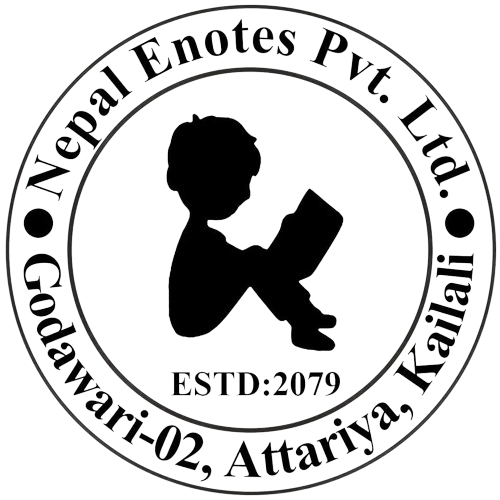Photons
The photon is a particle that has energy and momentum but it doesn’t have mass and electric charge.
The proportion of Photon
The velocity of a Photon is different in the different mediums due to the charge of its wavelength.
It travels with the speed of light in a Straight line in a
vacuum.
It is not deflected by both electric and magnetic field
Each photon has energy (hp) and momentum equal to (hf/c= h/λ
Photoelectric effect
When the light of electromagnetic mediation such as x-rays UV-ray
falls on a metal surface it emits electrons. This phenomenon
of emission of election from a metallic surface when radiation of
suitable frequency falls on it is called the photoelectric effect. These
elections are Photoelectron
Important terms
1. Threshold frequency (f0)
The minimum frequency of incident radiation at which the Photoelectric emission will occur is called threshold
frequency. Different metals have different threshold frequencies.
2. Threshold wavelength (λ2)
The wavelength cross ponding to threshold frequency is known
as threshold wavelength
we know,
λ0c/f0
where e = speed of light in a vacuum
f0 =
threshold frequency
since threshold frequency is minimum frequency so the threshold wavelength is the maximum wavelength.
3. Work function (Φ)
The minimum amount of energy required to take a free-electron but of the metal surface is known as work function. Its value depends upon the nature of the metal.
If f0 is the threshold frequency of incident radiation for given metal then the work function is given by, =
Φ = hf0 (h = Plank’s constant)
Quantum theory of radiation (E = hf)
According to this theory associated with each photon of frequency ‘f’ is given by,
E = hf
Where ‘h’ is Plank’s constant
Einstein’s photoelectric equation

Fig: Photoelectron effect
When a Photon of energy ‘hf’ is incident on a metal surface then a part of the energy is used to eject an electron from the surface and the rest of the energy is used to accelerate the photoelectron as shown in the figure above. If ‘M’ be the mass and ‘V’ be the velocity of emitted photoelectron then K.E. of the emitted photoelectron is given by,
K.E. = 1/2 MV2
But, the energy of incident photons = work function + KE of the emitted electron
Equation (i) is Einstein’s photoelectric equation.
Also;
Then equation (i) becomes;
This equation shows that the KE of Photoelectron varies with the wavelength of incident radiation
Experimental study of the photoelectric effects
Fig: Arrangement for the study of the photoelectric effect
The experiment arrangement consists of an evacuated glass tube with two electrons cathode ‘c’ and anode ‘A’ as shown in the figure above. A constant potential difference is applied between cathode and anode with help of battery photoelectric current is measured by millimeter and p.d. is measured by a voltmeter.
When a suitable frequency of radiation falls on the cathode electrons are emitted and they are accelerated towards the anode. If it is kept at an up positive potential with respect to the cathode. Due to the flow of electron current is flow in the circuit which is called the photoelectric Current.
When the potential of the anode is varied then photoelectric current also varied. It is found that the photoelectron increase with an increase in positive potential on the anode and it becomes maximum when all the emitted electrons from the cathode reach the anode. This current is called saturation current. There are no further increases in photoelectric current with an increase in positive potential at the anode.
When a negative potential is applied to an anode with respect to the cathode, the photoelectric current decreases and finally becomes zero at a certain value of negative potential. The value of negative potential. The value of the negative potential at which the photoelectric current becomes zero is called stopping potential/cut-off potential [vo]. In this case, work done by stopping potential is equal to the maximum K.E, of the photoelectrons emitted.
The effect of potential on photoelectric current is shown in the graph below

Measurement of Plank’s constant (h)
Experimental Verification of Einstein’s photoelectric
Equation [Millikan’s Experiment]

Fig:- Arrangement for measure ‘h’
for Millikan’s Rxpt A evacuated glass tube is taken which consists of a wheel (w); plates (p). From the window along with the filter, photons of suitable frequency can be incident. In-wheel, three blocks i.e, A, B, and C are kept, which Are actually blocks of photosensitive metals like Li, Na, K, etc. The knife is used to clean Oxide layers from metals. Retarding potential is applied between W and P
When Light is incident on block A, elections have emitted those electrons having highest K.E. reaches P when retarding potential is zero. Now the retarding potential is gradually increased At a certain minimum Value of retarding potential, the photoelectric current became Zero, this potential is called Stopping potential [Vo] or [Vs]
Then,
K.E. max = EVs (i)
From Einstein’s photoelectric equation;
Energy of incident photons = KE of emitted electron + Work function
E = KE max + φ
Or, 1/2 MV2max = hf – hf0 (ii)
From (i)and(ii);
eVs = hf – hf0
Vs = h/ef – h/ef0
Which is in the form of y = m + c and; graphically represented by;
From graphs;
By knowing the value of AB, e, f0, OC, AB, and AD we can calculate the value of φ; h.
Thus, it verifies Einstein’s photoelectric effect.
If you want to ask anything, please contact us by Messaging us on Social Media.
Class 12 Physics Notes 2078: Complete Physics Guide (New Syllabus) | Questions Answers and Guide | Class 12 Physics Book Solution Guide | Class 12 Physics Book PDF 2078 Solution | Class 12 Physics Book Notes 2078 Guide | Class 12 Physics All Chapter Notes | Physics Chapter Wise Notes. Class 12 Physics Photons Notes.








